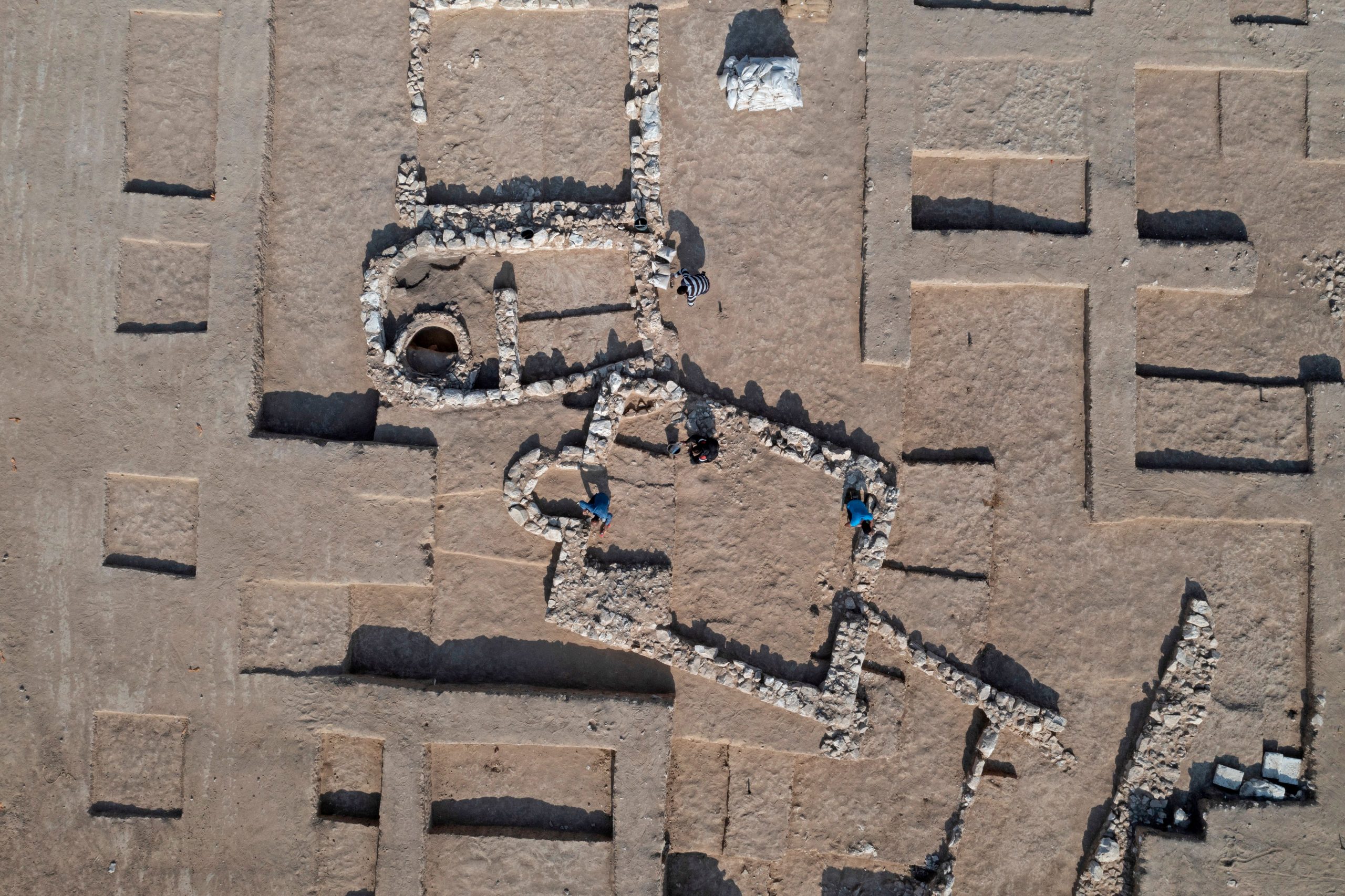
Last week, archaeologists discovered one of the world’s oldest mosques beneath Rahat, in the south of Israel. There, construction on a new neighborhood in the world’s largest Bedouin city uncovered “a square room and a wall facing the direction of Mecca,” according to a statement from the Israeli Antiquities Authority (IAA). The remains are 1,200 years old.
The mosque also features “a half-circle niche in that wall pointing to the south,” further pointing to its identity as a place of faith, according to Agence France-Presse, which broke the story. Average capacity would have been about a dozen worshippers at once.
Palestinian workers of Israel’s Antiquities Authority during work at the recently discovered ancient mosque in the Bedouin town of Rahat in Israel’s southern Negev desert on June 22, 2022. Photo by MENAHEM KAHANA/AFP via Getty Images.
Researchers also discovered a “luxurious estate building,” according to Agence France-Presse, which housed ancient tableware and glass, suggesting it was once home to wealthy inhabitants.
Just three years ago, archaeologists discovered another nearby mosque that also dates back to at least the eighth century CE. That one, however, was empty.
“What is unique in our mosque is the proliferation of seventh-century ceramics on the site, making it one of the earliest mosques in the world,” archaeologist and excavation co-director Elena Kogan-Zehavi told the Times of Israel. The discovery has helped solidify an anthropological understanding of the Negev desert region’s rich cultural heritage.
Muslim Palestinian workers of Israel’s Antiquities Authority pray amid the remains on June 22, 2022. Photo by MENAHEM KAHANA/AFP via Getty Images.
“Islam came very, very early in the northern Negev and began to live alongside the Christian settlement,” Kogan-Zehavi continued. That transition which took shape in the early seventh century.
“History always repeats itself,” she said. Within the last century, “the Rahat Bedouin left a nomadic life, settled in cities, and are trying to create a bit of a different life in their permanent settlement. The same thing happened 1,200 years ago.”
Locals are eager to preserve this rooted piece of their own history. Just earlier this year, Rahat inaugurated its first cultural center. The IAA has said that the mosques will be “preserved in their current locations, whether as historic monuments or as active places of prayer.”